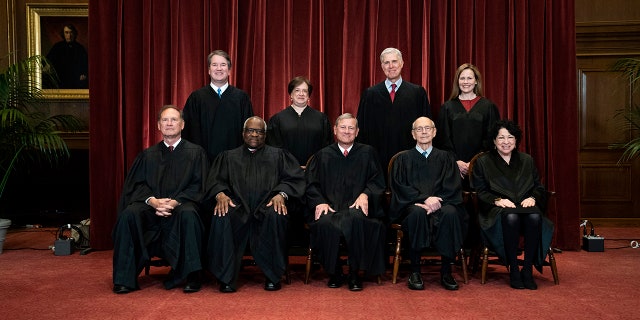Biden Supreme Court commission debates court-packing amid liberal backlash to split approach to reform
The Presidential Commission on the Supreme Court of the United States holds a public meeting
President Biden’s Supreme Court commission is meeting on Friday to discuss potential reforms to the court after it released wide-ranging discussion materials which touched on court-packing and several other potential changes Thursdsay night.
The discussion materials presented a mixed view on court-packing, which drew backlash from some progressives who believe Biden and Democrats in Congress should pack the court with multiple liberal justices after Republicans confirmed three justices during former President Donald Trump’s tenure.
But Co-Chairman Bob Bauer, who a former White House Counsel under former President Barack Obama, opened the meeting by pushing back on the criticism.
“The commission has not edited the material and the material should not be understood to represent the commission’s views or those of any particular commissioner,” Bauer said. “To this point and particularly in light of some confusion and uncertainty since the posting of these materials, we refer you to the front page of each of the drafts that have been publicly posted that clearly set forth these points.”
Bauer added that the materials are “not the commission’s drafts nor a draft report of the commission.”
In this April 23, 2021, file photo members of the Supreme Court pose for a group photo at the Supreme Court in Washington. Seated from left are Associate Justice Samuel Alito, Associate Justice Clarence Thomas, Chief Justice John Roberts, Associate Justice Stephen Breyer and Associate Justice Sonia Sotomayor, Standing from left are Associate Justice Brett Kavanaugh, Associate Justice Elena Kagan, Associate Justice Neil Gorsuch and Associate Justice Amy Coney Barrett. Many progressives, upset that former President Donald Trump got to appoint three justices, want to pack the court with more liberal justices. (Erin Schaff/The New York Times via AP, Pool, File)
(AP)
The meeting opened at 10 a.m. with discussion of the reason many are calling for court reform. Most of the substantive discussion on court-packing is likely to happen between 11:10 a.m. and 12:50 p.m. when the commissioners will deliberate “Membership and Size of the Court,” according to the public agenda of the meeting.
“Proponents of Court expansion argue that by adding two or more seats to the Supreme Court, Democratic lawmakers could help restore balance to – and, thus, the legitimacy of – the Court. Those who take this perspective also emphasize that a failure to respond to the hardball tactics since 2016 might encourage future aggressive measures in the Senate confirmation process,” the discussion materials released Thursday say of court-packing.
“But the risks of Court expansion are considerable, including that it could undermine the very goal of some of its proponents of restoring the Court’s legitimacy,” the materials continue. “Recent polls suggest that a majority of the public does not support Court expansion. And even some supporters of Court expansion acknowledged during the Commission’s public hearings, the reform… would be perceived by many as a partisan maneuver.”
The progressive American Constitution Society president Russ Feingold nevertheless hit back against the balanced content of the commission’s discussion materials.
“We have said since the Commission’s beginning that for the Commission to provide a meaningful contribution to restoring the legitimacy of our judiciary, it needs to advance a specific list of Supreme Court reforms that can be acted upon in the near term,” he said Thursday. “The discussion materials released today unfortunately fail to match the urgency of the situation and do not lay out a solution to the legitimacy crisis before us.”
Later in the day the commission will also debate potential reforms related to term limits for justices, potential rotation of justices, case selection and the Supreme Court’s broader role within the Untied States’ system of government.
Source: Read Full Article



